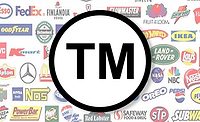COVID-19: Mask Requirements in Construction

New cases of the coronavirus (COVID-19) continue to surge through parts of America, and according to Johns Hopkins University, the U.S. reported 24,760 new cases on Father’s Day alone.
While not a new question or issue, many contractors continue to encounter uncertainty and lack of guidance regarding the use of face coverings in the workplace. This is no surprise, given that informal guidance from government bodies continues to fluctuate at the national and state level. Moreover, formal regulations (those rules which tell us what we must and must not do) with regard to COVID-19 remain to be published in many jurisdictions.
With what is before us now, employers should attempt to apply existing regulations and informal guidance to develop workable solutions, adhere as closely as possible to industry best practices, and stay abreast of new information as it becomes available. To that end, this article addresses what we know now about face coverings in the workplace.
1. Is OSHA Requiring Face Coverings in the Workplace?
The federal Occupational Safety and Health Administration (OSHA), which governs approximately half of the states in the country (excluding states which have adopted their own regulations, such as California), has not implemented any new rules in response to COVID-19. Rather, OSHA has published non-binding agency guidance documents which, almost exclusively, reference pre-existing rules under the OSH Act.
The most important of these pre-existing rules is section 5(a) of the OSH Act (commonly referred to as the “General Duty Clause”). The general duty clause mandates that every employer, in every circumstance, provide to its workers “employment and a place of employment which are free from recognized hazards that are causing or are likely to cause death or serious physical harm.” This requirement is absolute, and obligates employers to take whichever steps are necessary to eliminate recognized hazards that are likely to cause serious physical harm or death. If this is not possible, the employer must cease operations.
Similarly, OSHA has not issued any specific or blanket directive that employers require the use of face coverings. Rather, OSHA has published the following advice in its Guidance on Returning to Work, OSHA 4045-06 2020:
Employers must conduct a hazard assessment in accordance with OSHA’s PPE standard (29 CFR 1910.132), if applicable, to determine the PPE requirements for their unique work site. Employers subject to this standard must determine if PPE (such as gloves, surgical masks, and face shields) is necessary for employees to work safely after considering whether engineering and administrative controls and safe work practices (such as social distancing or the use of cloth face coverings) can effectively mitigate identified hazards.
In other informal guidance addressing COVID-19, the administration has noted that its preexisting standards addressing respirators and bloodborne pathogens are applicable, where appropriate, to the new hazard of COVID-19. For example, when “respirators are necessary to protect workers,” employers must implement a comprehensive respiratory protection program in accordance with 29 CFR 1910.134. Additionally, OSHA’s Bloodborne Pathogens standard (29 CFR 1910.1030) applies to occupational exposure to human blood and other potentially infectious materials that typically do not include respiratory secretions that may contain COVID-19 (unless visible blood is present).
In short, OSHA requires that employers assess their workplace, identify applicable hazards, and implement the appropriate measures to ensure employees are not exposed to recognized hazards likely to cause death or serious physical harm. While face coverings may help reduce the spread of COVID-19, they are not specifically required by OSHA, and their use will not necessarily protect the employer from liability should an employee be exposed to COVID-19 in the workplace.
2. Are Other Governmental Agencies Requiring the Use of Face Coverings?
As noted above, approximately half of U.S. states have implemented non-federal, state-specific occupational safety and health plans. These plans must be as restrictive as the federal plan but are frequently more restrictive than the federal plan. As such, employers located within a state-plan jurisdiction should assume local regulations vary from federal requirements, and review the specific regulations in their state with their legal advisor.
One example is California, which operates an OSHA-approved State Plan covering most private sector workers and all state and local government workers (“CAL/OSHA”). Like its federal counterpart, CAL/OSHA has issued guidance documents, including its COVID-19 Industry Guidance: Construction (May 12, 2020). CAL/OSHA’s guidance unequivocally states that employers should provide and require the wearing of face coverings, which are “strongly recommended.”
As widely reported, local municipalities and states, such as California, have issued executive orders requiring the use of face coverings. Yet, it is unclear how, and if, these orders will be enforced (e.g. against the individual or business, and by CAL/OSHA or the police). California’s order, issued jointly by the governor and Department of Public Health, is titled “Guidance for the Use of Face Coverings,” yet goes on to require that people in California “must wear face coverings,” with certain exceptions. (emphasis added). Moreover, CAL/OSHA has echoed that guidance requiring face coverings is “mandatory,” but appears to rely primarily on the governor’s order for this assertion, rather than any specific CAL/OSHA regulation.
Irrespective of enforceability, employers located within a state or municipality requiring the use of face coverings would be wise to comply with any such requirement. Even those employers located outside of jurisdictions specifically requiring face coverings should still mandate their use to avoid potential employee harm and liability under the General Duty Clause (which is universally applicable in all states).
3. What Kind of Face Coverings are Appropriate?
OSHA and its state counterparts have been clear on one topic: cloth face coverings are not PPE. They can be worn only to reduce the spread of potentially infectious respiratory droplets from the wearer to others. In other words, if an employer sends an employee into a crowded public area wearing only a cloth face covering, the employer has not acted to protect the employee; only to protect the people around the employee.
In general, employers should always rely on a hierarchy of controls that first includes efforts to eliminate or substitute out workplace hazards, then engineering controls, administrative controls, and other safe work practices before moving to PPE (e.g. respirators). However, a respirator must be provided to each employee when it is ultimately necessary to protect the health of the employee despite other efforts. See, 29 CFR 1910.134(a)(2). Use of respirators, in turn, requires the implementation of a respiratory protection program with worksite specific procedures.
4. What Requirements are Applicable to the Use of Respirators?
Pursuant to 29 CFR 1910.134(e)(1), employers must provide a medical evaluation to determine the employee's ability to use a respirator before the employee is required to use one. Additionally, before an employee is required to use any respirator with a “negative or positive pressure” tight-fitting facepiece, the employee must be fit tested. 29 CFR 1910.134(f). It is important to note that this list is not exhaustive, and numerous other requirements apply to employee use and training relating to respirators.
For identification purposes, a “tight-fitting” facepiece means a respiratory inlet covering that forms a complete seal with the face. “Negative pressure respirator (tight fitting)” means a respirator in which the air pressure inside the facepiece is negative during inhalation with respect to the ambient air pressure outside the respirator. “Positive pressure respirator” means a respirator in which the pressure inside the respiratory inlet covering exceeds the ambient air pressure outside the respirator.
Where required based upon the forgoing criteria, employers must ensure employees pass an appropriate qualitative fit test (QLFT) or quantitative fit test (QNFT) as defined by section 1910.134(f). These tests must occur before initial use of the respirator, whenever a different respirator facepiece (size, style, model or make) is used, and at least annually thereafter.
Medical evaluations must be conducted by a physician or other licensed health care professional identified by the employer. Administration of the examination must meet specific regulatory requirements outlined by OSHA, including the completion of an approved questionnaire. Additionally, the employer must provide the health care professional with specific information regarding the type of the respirator, its use, and the nature of the employee’s work. Depending on the employee’s response to the questionnaire and other factors, a follow-up medical examination may also be required.
Each of the forgoing requirements, as well as others not listed here, should be planned for and outlined in the employer’s respiratory protection program. And while these requirements may seem daunting, the cost and effort of compliance, where necessary, is likely more economical than the potential liability which could arise in the alternative.
Disclaimer: The information contained in this article is for general educational information only. This information does not constitute legal advice, is not intended to constitute legal advice, nor should it be relied upon as legal advice for your specific factual pattern or situation.
Cotney Construction Law is an advocate for the roofing industry, General Counsel of the NRCA, FRSA, WSRCA and several other industry associations. For more information, contact the author 866-303-5868 or go to www.cotneycl.com.
Looking for a reprint of this article?
From high-res PDFs to custom plaques, order your copy today!







